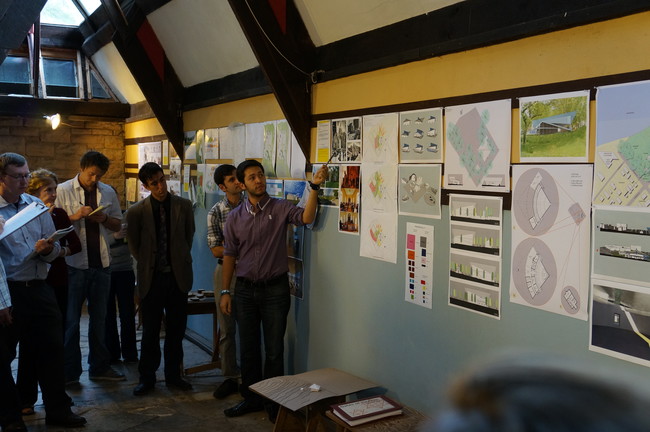The Frank Lloyd Wright School of Architecture can be as unconventional as its founder. Since 1932, students have largely learned by doing—which in the early days involved learning kitchen design by preparing meals for the Wright family. Back then, students left without diplomas. Wright "thought you didn't have to have a degree—his letter of recommendation was enough," his grandson, Eric Lloyd Wright, said.
In recent years, the school has worked to shed its reputation as a kind of cult; in 1992 it earned accreditation, and with it the ability to offer a professional degree. But now it has received an unwelcome blow: starting in 2017, it will no longer have that accreditation, meaning it will have to disband its M.Arch. program, says Sean Malone, president and CEO of the Frank Lloyd Wright Foundation.

Photo © Frank Lloyd Wright School of Architecture
The change will not directly affect any of the current students.
In 2012, the Higher Learning Commission (HRC), a regional accrediting body based in Chicago, announced that it would no longer accredit schools that are part of institutions whose missions extend beyond academics. The Frank Lloyd Wright School of Architecture is part of the Frank Lloyd Wright Foundation, which also runs Taliesin (in Spring Green, Wisconsin) and Taliesin West (in Scottsdale) and helps maintain Frank Lloyd Wright’s archive. John Hausaman, a spokesman for the HLC, says that the new rules would “require Frank Lloyd Wright School of Architecture to file for incorporation as an institution with a primary purpose of offering higher education. The Commission has offered a two to three-year time frame for the school to make the change.”
Malone says that in two years of discussion with the HLC, he failed to persuade them that his school complies with the new rules. “I wish that they had looked at us and said, 'the foundation as a whole is an institution of higher education,'” Malone says. “But that’s not the determination they came to.”
As a result, he says, the Foundation board considered turning the school into an independent entity, which would have satisfied the HLC but would have been a problem for donors to the Foundation. That, he says, is because the Foundation would have had to provide more than $1 million a year to the school to allow it to continue operating, but would have had no control over how the money was spent.
The National Architectural Accrediting Board, which accredits specific architecture programs, requires those programs to be part of institutions that have regional accreditation. Therefore, the loss of the school’s HLC accreditation will mean the loss of its NAAB accreditation. On Thursday, Malone broke the news to the school’s 20 students, who spend summers in Wisconsin and winters in Arizona. He stressed that the change will not hurt any of them directly, because it will not take effect until 2017. Still, he says, he is “deeply disappointed” by the HLC decision.
Malone says the school will now focus on programs that don’t require accreditation, including a post-professional program that has been in the works since last year. In addition, he is open to forming a partnership with an accredited institution, which would allow the school to continue offering degrees. “We bring a lot to the table,” he says.
The school was founded as the Taliesin Fellowship in 1932; by paying tuition, fellows helped Wright and his family through the Great Depression. Some of the Fellows who came to Taliesin never left. More than a dozen of them, now mostly in their 70s and 80s, receive room, board, and a small stipend from the foundation. Some of the fellows practiced as Taliesin Associated Architects, considered Wright’s “legacy firm,” until 2003, when the firm was disbanded. And last year, the Foundation transferred much of the Frank Lloyd Wright archive to Columbia University and the Museum of Modern Art, thus reducing its investment in conserving and cataloging materials.

Post a comment to this article
Report Abusive Comment